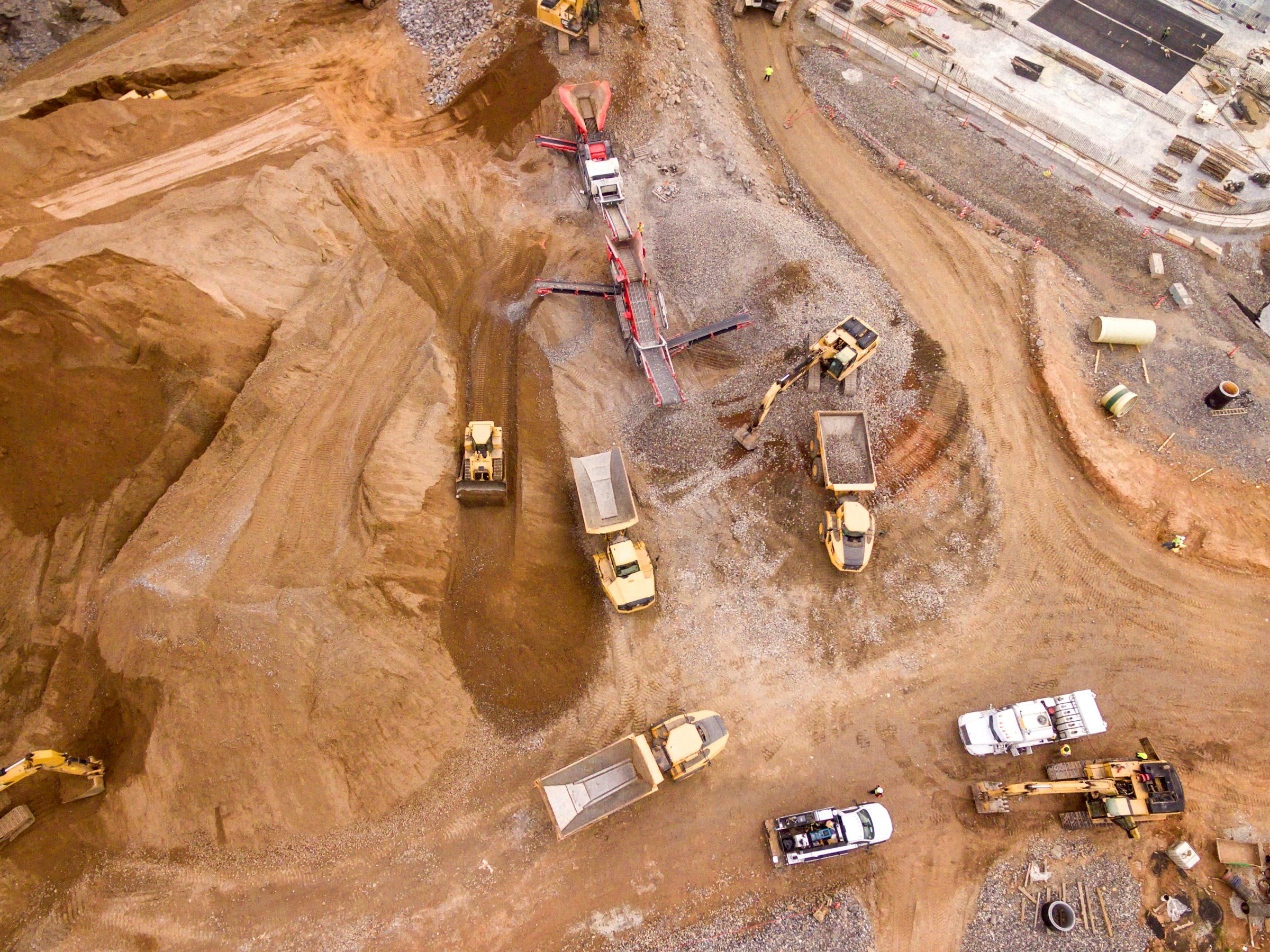The building and construction industry has made great strides in improving its means and methods over the last decades. Improvements like cutting down on the waste and pollutants construction projects cause to lower the carbon footprint of the industry has been a major focus.
A number of things have been done from choosing sustainable construction materials to streamlining processes to reduce waste, improve efficiency, and cut down on the excess use of heavy machinery have all been utilized to make construction projects more environmentally-friendly.
Another step the industry can take in streamlining processes results in worksites that uphold these environmental standards while also adding an efficiency that traditional methods do not. Many companies have integrated Geographical Information Systems into their workflow to become more efficient as well as be more mindful of the construction site’s existing characteristics to create plans that adapt to the site as well as serve the client and project in the best way possible.
Table of Contents
What Are Geographical Information Systems?
A geographic information system (GIS) is a combination of computer hardware and software that stores, manages, edits, analyzes, outputs, and visualizes geographic data. It may utilize tools like maps, satellite images, topographical information, and more. In short, it’s a computer system that analyzes and displays information directly related to a unique location.
What Types of Projects Benefit From Geographical Information Systems?
In short: all projects benefit from geographical information systems. Whether the project is a new subdivision, a strip mall, office building, or even major infrastructure improvement projects, all benefit from the precise calculations these systems provide.
Is It Difficult to Add Geographical Information Systems to My Project Workflow?
No! Most construction companies are already using software to track project data, accounting, ordering, large-team communication, and more. GIS technologies and their software can integrate this data for more accurate and precise reporting of every aspect of your project.
Keep in mind your crew will need to be trained on the use of the new software before it can be truly effective and efficient for your project.
Is Adding Geographical Information Systems to My Workflow Worth It?
Every construction project benefits from GIS technologies. If you’re concerned about the initial cost of implementation, consider the many benefits below and how they translate into direct cost savings: lower health and safety costs, less material waste, improved efficiency, and more cut down on time and money spent vs. traditional methods.
Types of Geographical Information Systems
There are a number of GIS tools that can help precisely plan every aspect of a construction project for the best results possible. Some of these tools include:
Global Navigation Satellite Systems
Global Navigation Satellite Systems (GNSS) are part of the foundation of modern construction positioning. Today’s GNSS receivers provide accuracy down to the centimeter in real-time. The pinpoint accuracy enables precise equipment guidance and site layout verification.
Light Detection and Ranging
Light Detection and Ranging (LiDAR) systems are able to capture millions of precise distance measurements per second! These measurements create detailed, three dimensional topographical maps of your construction site. The use of LiDAR has been shown to more accurately deliver topographical information to improve project planning. LiDAR systems can be mounted on drones, aircraft, vehicles, or handheld devices for easy use.
Unmanned Aerial Systems
Unmanned Aerial Systems (UAS), or drones, have disrupted and transformed the construction site monitoring and documentation space. Drones can carry advanced cameras and sensors into previously unreachable or locations dangerous for human exploration.
Drone-mounted cameras and sensors capture imagery, create topographical models, and track project progress not only in these sensitive areas but throughout the construction site with outstanding detail and frequency. Read our article Drones in Construction: Surveying and Monitoring Commercial Sites for more information on how drones can help plot the best plan for your next construction project.

Tip: make sure to check the FAA regulations for the airspace around your construction site. Some sites may have height limitations, and some may not allow drone use at all.
Building Information Modeling
Building Information Modeling, or BIM, systems use data to create intelligent three dimensional models with detailed information about each project component. Combining geospacial data and BIM technology creates a top-notch tool for visualizing how a structure will interact with existing site conditions.
Total Station and Topographic Surveying
This type of equipment provides the precise measurements necessary to create an excellent construction layout and administer quality control. Modern systems incorporate traditional surveying accuracy, automated operation, and real-time data integration – all essentials for maintaining building standards.
Benefits of Geospacial Technologies
A successful construction project starts with getting the lay of the land, and that’s more than just the ground you can see when you look at a site. Geospacial technologies get below the surface and to the nitty gritty we can’t see to provide the detailed information necessary to make the most informed planning decisions.
Project Planning and Site Analysis: Topographic Mapping and Analysis
Before drawing up plans or breaking ground on your next construction project, you need a firm grasp on the existing ground conditions at the construction site. Traditional surveying methods take extensive amounts of time and man power depending on the size and complexity of the site.
With traditional human surveying, there is the potential to miss critical details (possibly from inaccessible or difficult to reach critical locations) that may become big, expensive problems down the line.

GIS technologies like LiDAR can reveal the most subtle elevation change that may affect drainage patterns, identify existing vegetation that may require special handling, and identify and document underground utilities including electrical lines, water and sewer piping, and more. It can even find previously undocumented structures or rare finds. Modern geospatial approaches capture complete site information in days rather than weeks. In fact, several construction projects across the country have uncovered interesting and disturbing finds, from woolly mammoth fossils to human remains.
Project Planning and Site Analysis: Utility Location and Mapping
Look up and you’ll still see some utility wires overhead, but many utilities have gone underground. Burying lines reduces damage from high winds, falling, trees, heavy ice or snow, and even traffic accidents – which may result in power outages that affect living and working conditions of nearby homes and businesses. Your site and the surrounding area will be more aesthetically pleasing without so many wires running everywhere, too.
Even given such benefits, underground utilities pose one of the most significant risks on a construction site. All buried utilities – gas, electric, water, and internet cables – must be marked to avoid safety hazards and costly repairs and delays. Traditional surveying can provide approximate locations, but GIS systems can accurately pinpoint exact locations, depth, direction, and condition so teams can incorporate those locations into site and building planning.
Project Planning and Site Analysis: Environmental and Regulatory Assessment
Your new construction site may be subject to various environmental regulations that require detailed documentation of existing site conditions. Documentation of wetlands, endangered species habitats, cultural resources, and even contaminated areas need to be mapped. GIS technologies can streamline this assessment process and provide the precise documentation needed for local regulatory compliance.

For example, drone surveys can easily map wetland boundaries with an accuracy that meets regulatory requirements and without human disturbance to the environment. Additionally, the timestamped photos or video documentation provides legal evidence of compliance efforts, reducing time and cost of environmental assessments and producing superior documentation.
Project Planning and Site Analysis: Geotechnical Investigation Integration
Soil conditions on a construction site determine the direction of the entire project. They determine the foundation requirements, excavation methods needed, and even overall construction feasibility. Employing GIS technologies to analyze soil conditions enhances geotechnical investigations, ensuring soil samples are collected from precise locations for properly integration into project planning.
GIS technologies manage the resulting data to create accurate and detailed subsurface models of soil conditions, revealing any patterns in soil conditions to better inform foundation design.
Design Development and Coordination: Accurate Base Mapping
Quality designs are produced from accurate measurements and base mapping information. If survey data is outdated or imprecise, errors can occur, which manifest themselves as expensive variation changes during the construction process. With the use of modern GIS technologies, project leaders can avoid these costly mistakes and provide accurate, current base information for a quality design and outcome.

Design Development and Coordination: Multi-Disciplinary Coordination
Construction projects include a number of moving parts, including multiple design disciplines that must coordinate with one another and work within a common spacial framework. Just a few of the teams you’ll need to work with include:
– Civil Engineers for site improvements
– Landscape Architects for a sustainable vegetation plan and installation
– Utilities Engineers to properly route required infrastructure systems
This is not to mention the number of subcontractors needed during the construction phase like plumbers, electricians, painters, and more. Without proper coordination, these disciplines can conflict with proper planning and execution during the construction process.
GIS technologies can help create an accurate coordination system to identify and avoid conflicts before construction begins.
Design Development and Coordination: Design Visualization and Communication
If GIS technologies do just one thing right, it’s that they excel at creating compelling visualizations to help clients understand proposed projects while enabling better design decision making. GIS technologies can provide three dimensional models that accurately represent existing site conditions that provide context for proposed improvements, an ability traditional drawings can’t match.

Additionally, GIS technologies can enable the use of things like virtual reality to allow clients to ‘walk through’ a proposed project before construction even begins! Utilizing such technologies leads to better-informed decisions and fewer changes or variations during the construction process. For more information on how to provide this service for clients, read our article on Virtual Reality for Client Walkthroughs in Commercial Projects.
Construction Layout and Positioning: Machine Control Systems
GIS technologies, such as Global Navigation Satellite Systems (GNSS), provide precision down to the centimeter without the need for traditional survey methods. Information garnered from GNSS can direct heavy machinery like excavators, dozers, and graders with real-time position information to follow design specifications automatically. This coordination improves productivity as well as accuracy while mitigating health and safety risks associated with operating heavy machinery.
Construction Layout and Positioning: Real-Time Positioning for Setting Out Teams
Traditional construction layout involves workers measuring distances and angles from established control points. This time-consuming process can also result in errors that may not be discovered until construction begins. When a project utilizes GIS systems like GNSS-equipped layout programs, teams can get direct positioning of any point with the project coordinate system, resulting in significant improvements in speed and accuracy of measurements.
Imagine receiving precise measurements to establish building corners, service connections, and critical levels in minutes rather than hours, days, or longer. GNSS system capabilities provide an efficiency that allows teams to keep pace with other construction progress while maintaining accuracy.
Construction Layout and Positioning: Quality Control and As-Built Documentation
Maintaining quality throughout a construction project is paramount to that project’s success. Implementing GIS technologies throughout the process enables continuous quality control monitoring. For example, GNSS-equipped surveying instruments can immediately verify construction work meets design specifications after completion, meaning corrections can be made before work proceeds.

Additionally, as-built documentation can greatly benefit from GIS integration. Rather than traditional (manual) measuring, GNSS systems calculate precise positions of all constructed features on a site automatically. The collected data is deposited directly into the project’s shared file storage system for accurate, up-to-date records.
Progress Monitoring and Project Management: Aerial Progress Documentation
GIS systems, including drone monitoring, used on a regular basis throughout a project can capture complete project documentation while maintaining consistent quality and perspective. Drone-captured imagery is used in progress monitoring, variation documentation, compliance verification, client communication, and more.
Teams can produce time lapse sequences from drone footage for an accurate picture of project progress to keep a client up-to-date on project activities. Footage can also be used in resolving disputes, insurance claims, and other legal documentation.
Progress Monitoring and Project Management: Volume Calculations and Earthworks Management
Providing accurate earthworks quantities are an essential part of project cost control and programming. Again, the traditional means of manual surveys are time-consuming and often imprecise. Technologies like photogrammetric processing of drone imagery provide accurate volume calculations while significantly reducing site time and on-site hazard exposure.
Progress Monitoring and Project Management: Resource Management and Logistics
When sites are difficult to access due to urban locations or other constraints, large construction projects face challenges. Project leaders need to consider complex logistics for material delivery, workforce coordination, plant positioning, and more. The implementation of GIS technologies and project management software can help optimize and simplify these logistical difficulties through the spacial context they provide. This context leads to better programming-related decision making.

Technologies such as plant tracking systems can monitor the location and use of construction machinery, manage material stockpiles, and more to ensure efficiency and plan deliveries to ensure a continuous workflow.
Health, Safety and Risk Management: Hazard Identification and Mapping
Health and safety on an active construction site is paramount. With the help of GIS systems, project leaders can identify and communicate safety hazards with spacial components to teams in the field. Danger zones like excavation areas, crane and heavy machinery operation zones, service corridors, and environmental hazards are all important areas to map out and inform all workers to be mindful of these areas.
GIS technologies offer precise mapping capabilities and effortless communication to safety management teams and systems. Its real-time location system can monitor operative proximity to hazardous areas and things to provide automatic alerts of safety violations. These systems are particularly helpful in complex infrastructure projects or projects within large work areas with the potential to encounter hazards in multiple locations at one time.
Health, Safety and Risk Management: Emergency Response Planning
When it comes to health and safety in any work environment, having a detailed emergency response plan is imperative. This is especially true in the volatile environment of a construction project. Planning site access, evacuation routes, emergency service coordination, and protocols for other health and safety concerns is needed from the outset of the project through completion. GIS technology provides the spacial information necessary to effectively plot emergency procedures and support real-time coordination during an emergency.

Work with local fire and rescue services to pre-plan response needs for on-site health and safety emergencies. GIS technologies can provide them with comprehensive maps of access routes, water sources, communication systems, and other emergency equipment for effective and efficient emergency response.
Quality Assurance and Compliance: Inspection Documentation and Verification
Along with health and safety, quality control is at the top of the list on construction sites. Health and safety codes, building codes, and proper installation of components must be inspected and approved. Get ahead of the inspector and utilize GIS technology to generate all the spacial data needed for quality control reviews. For example, GNSS-equipped inspection systems can automatically record the location of each inspection point and link the information to detailed inspection reports to provide to local inspection teams.
Quality Assurance and Compliance: Regulatory Reporting and Documentation
Clients of major construction projects want regular progress reports, as do some regulatory bodies which oversee the work and the site. GIS technology can track spacial information to generate environmental monitoring reports, air quality assessments, traffic management, utility installation, and more.

GIS automated reporting systems can generate reports for required regulatory submissions and client information updates from real-time collection of field data, leading to a reduction in administration burden as well as accurate, consistent information.
Final Thoughts
The building and construction industry has come a long way in improving its means and methods. Traditional methods are becoming outdated as new technologies like GIS push their way to the forefront. When you meet with the staff of Structr Group, we can discuss how adding GIS technologies to the workflow of your next project can benefit your project from planning through construction, occupancy, and beyond.
Contact us today!




0 Comments